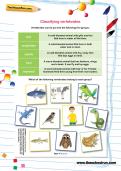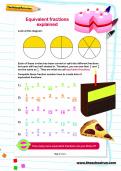Summer science fun

Summer science: make your own instant ice cream
Scientific principle: Phase change
Time required: 10 min
Equipment and ingredients
- One small zip-resealable sandwich bag
- One large zip-resealable plastic bag
- 120ml (1/2 cup) cream or full fat milk.
- 12.5g (1 tbsp) sugar
- A few drops of vanilla or other flavouring of your choice
- 3-7 cups of ice
- 75g (5 tbsp) salt


Download fantastic science resources today!
- Experiments And Science Fun pack
- Science Learning Programme for each school year
- All the instructions, questions and information you need
1. Add the cream, sugar, and vanilla to the small bag and seal, ensuring that any excess air is released.
2. Place the ice, salt and cream-filled bag into the larger bag and seal.
3. Vigorously shake the large bag over a sink for approximately 5 minutes. Stop when the cream has started to freeze and turn into a solid.
4. Remove the small bag and quickly rinse off the salt solution with cold water.
5. Pour the ice cream into a bowl, add your favourite toppings and enjoy eating your newly-frozen dessert!
The science behind the homemade ice cream
Ice cream is an emulsion, or a mixture of two liquids (water and fats) which do not normally mix together. To make ice cream, the milk or cream mixture needs to change its state from a liquid to a solid.
If the mixture was simply placed straight into the freezer, the water component would freeze first, forming large, crunchy ice crystals. Ice cream tastes better when it is creamy rather than crunchy, so the goal in ice cream making is to create the smallest ice crystals possible. By vigorously shaking the bag, any large ice crystals that may be forming are broken up into smaller crystals, resulting in a smooth and creamy ice cream.
The freezing point of ice is lowered by the addition of salt, so it starts to melt. As this ice melts it draws heat energy from its surroundings – including the cream mixture enclosed in the smaller bag – cooling it enough to cause the liquid cream emulsion to freeze, changing it from a liquid to a solid and forming ice cream.
Explore further: instant ice cream scientific questions
- What happens if you do not shake the bag vigorously when making the ice cream?
- If you put too much ice cream in your mouth, you may suffer from what is called 'brain freeze' or an 'ice cream headache'. Placing your tongue on the roof of your mouth should stop the headache – why do you think this is?
- Taste the ice cream frozen, then taste it again when it has melted. One should taste much sweeter than the other – why do you think this is?

Summer science fun: make a solar cookie oven
Scientific principle: Solar energy
Time required: 1 hour
Usually, ovens are powered using electricity or gas. This experiment uses the sun's own natural energy – or solar power – to heat an oven that bakes cookies.
Equipment and ingredients
- Clear tape / sticky tape or glue
- Black paper
- A warm, sunny day!
- Pencil
- Ruler
- Pizza box (a cereal box will work)
- Utility knife
- Aluminium foil
- Plastic wrap
- Cookie dough (follow your favourite recipe!)
1. Use a pencil and ruler to mark 2.5cm (1 inch) in from each side on the pizza box lid and draw a square to connect the marks.
2. Cut along the front and side lines of the square with the utility knife. Fold along the back line so that it acts as a hinge.
3. Line the inside of the flap and the inside walls of the box with foil, and tape or glue in place.
4. Seal the cut-out window shape by taping a sheet of plastic wrap over the hole.
5. Glue or tape a sheet of black paper to the bottom of the inside of the box.
6. Mix the cookie dough ingredients and roll into small balls, then flatten with your hand.
7. Arrange the discs of dough on a sheet of foil and place on top of the black paper inside the box.
8. Prop the cut-out lid at a 75 degree angle (approx) using a pencil and some tape. Leave outside facing the sun until cookies are ready (anything from 15-60 minutes).
9. Carefully remove the cookies from the box and allow to cool – then eat!
The science behind the solar oven
Solar ovens use heat emitted from the sun, called solar energy, to cook food. The foil reflects sunlight into the box, and the plastic wrap acts like a greenhouse by preventing the heated air inside the box from escaping. As more heat from the sun streams into the box, the air inside gradually becomes warmer. The black paper in the bottom of the box absorbs the warm sunlight, which in turn heats the food placed on top of it.
Explore further: solar oven scientific questions
- What other items can you cook in the solar oven? Could you bake a potato or even a pizza?
- Does changing the angle of the reflector flap change how efficient the solar oven is at cooking?
- Try using the oven on a warm but cloudy day. Does it still cook the cookies? Why do you think that is?

Dr Michelle Dickinson, a prize-winning nanotechnologist, researcher and educator, has made it her life mission to make science and engineering accessible for all. Her new book The Kitchen Science Cookbook is packed full of fun 'recipes', each teaching an important scientific principle in a format that is perfect for parents and children to enjoy together.

Give your child a headstart
- FREE articles & expert information
- FREE resources & activities
- FREE homework help









